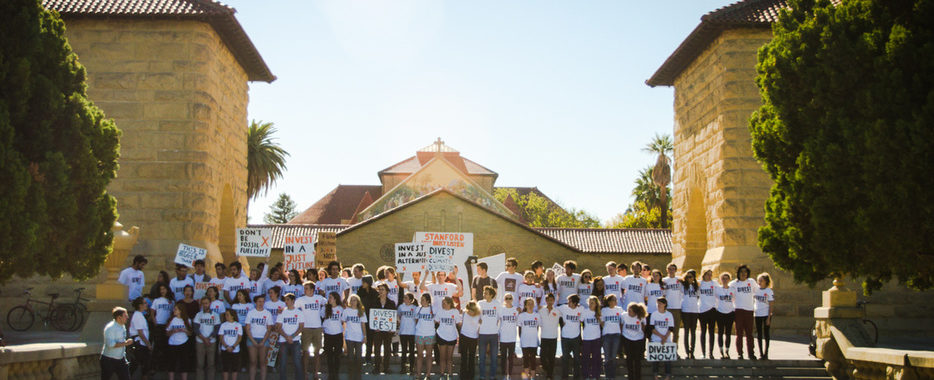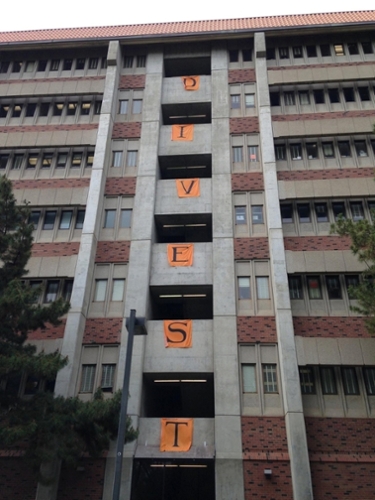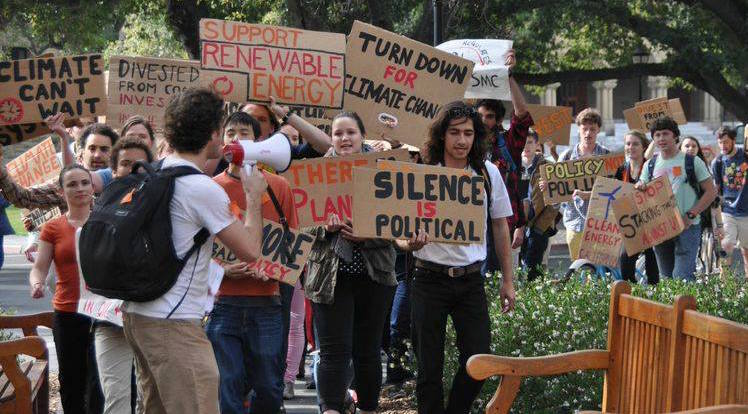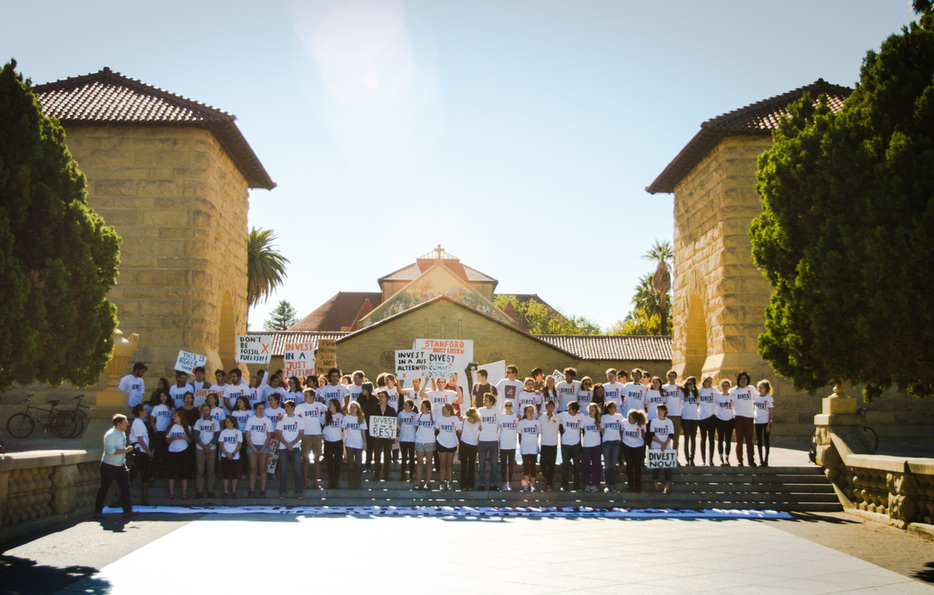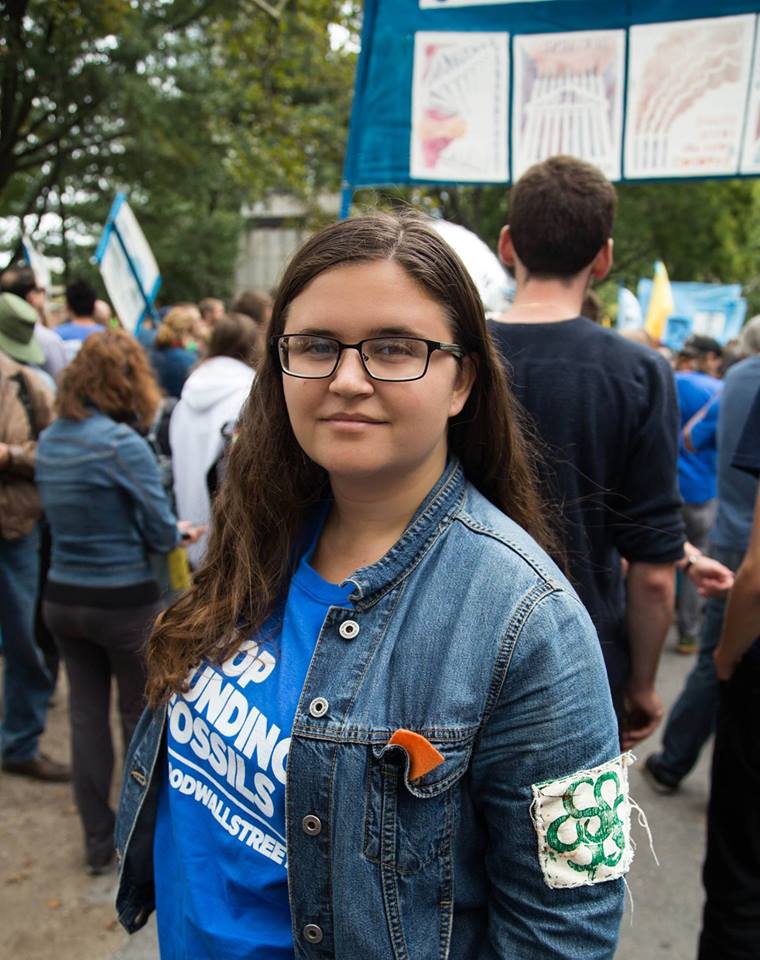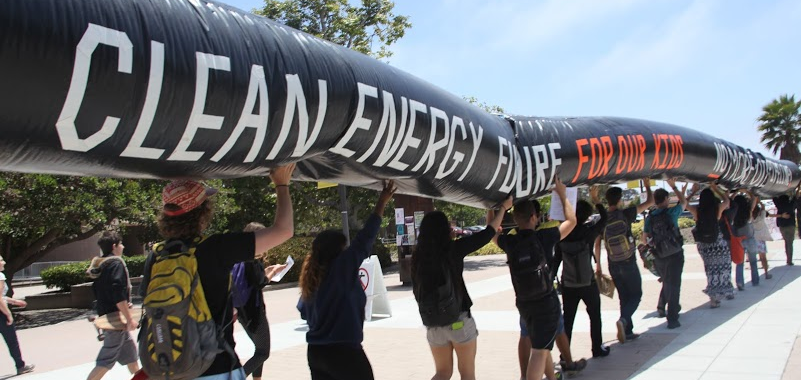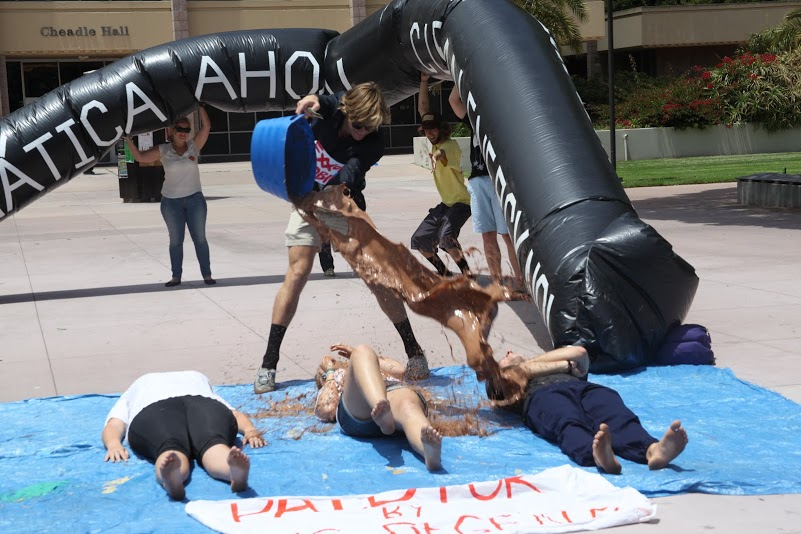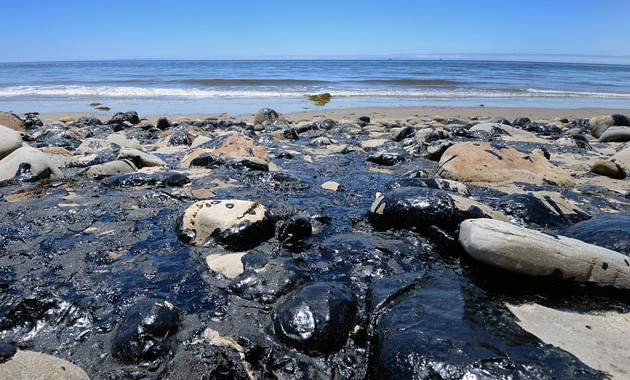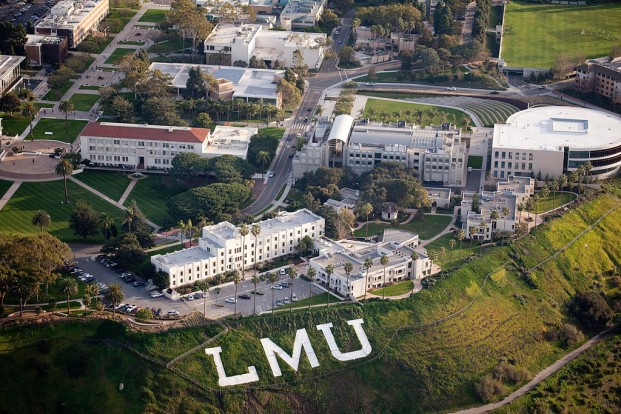By: Kristin Edwards
On January 24, 2017, a group of University of California Riverside (UCR) alumni posted a letter addressed to the school’s administration on an undergraduate sustainability Facebook page. It began thusly, in bolded font:
“This is a statement by alumni of the University of California, Riverside and community members in support of the Office of Sustainability and its staff members.
We strongly disagree with the current administration’s decision to lay off the director and staff members from the Office of Sustainability.”
(https://www.facebook.com/notes/sustainable-ucr/ucr-alumni-letter-of-support-for-office-of-sustainability/583841998477703/)
For many, this would be the first time they heard about the firings, including that of Dr. John Cook, UCR’s Director of Sustainability for the past six years. They took place just before the winter break in December, when most students were focused on taking their finals and preparing to travel home.
The substantial nature of the changes to UCR’s Office of Sustainability were surprising to many, particularly since the student body had received a message in mid-December which celebrated the strides the school had taken charted a path forward towards becoming a greener campus. The letter made no mention of what had taken place in the Office of Sustainability, and there would be no public announcement. The only hints it contained that something catastrophic had taken place were a reassurance that “the Office of Sustainability is not going away” and a note at the end of the message to contact an unfamiliar name for more information about sustainability on campus.
I tried to disentangle this story for myself, looking for any relevant public announcements or documents, but the firings had taken place in secrecy, known only to the Office of Sustainability and its supervisors.
Strife and Confusion on Campus
“We just thought they were continually weakening the Office of Sustainability. John Cook was the big blind-side.”
Ben Sommerkorn, an engineering PhD student at UCR and president of the Graduate Sustainability Network (GSN), worked closely with the previous Office of Sustainability. I met with him to discuss the changes that had taken place and the effects they are having on student initiatives.
“This whole thing has been shrouded in mystery,” he tells me in a campus coffee shop, eager to vent even though he has been discussing this situation for months. Sommerkorn wasn’t sure exactly when he heard that Dr. John Cook had been fired. He says that in the first few days of December he and other students closely associated with the office had gotten wind that four of the five sustainability staff members would not have their contracts renewed for 2017. Even as they prepared their response to the administration in objection to this decision, they didn’t know what was still to come. In the second week of December, the news broke. “They didn’t just fire him, they destroyed his position.”
Cook had not only been removed as a staff member, his position had been deleted from UCR’s system, which would prevent it from being recreated for at least a year. Sommerkorn tells me that Cook had “structural disagreements” with the administrators directly above him, Maria Anguiano, the Vice Chancellor of Planning and Budget, and Jeff Kaplan, the Associate Vice Chancellor of Capital Asset Strategies, and believes Cook was pushed out because of his resistance to their plans for campus reorganization. Anguiano authored the email message sent out to students and included the previously unknown Kaplan as the point of contact for sustainability at UCR with no acknowledgement of the change.
UCR at Night, Photo Credit: Xsolidsnail, Wikimedia Commons
“Firing John was kind of ridiculous; they were already restricting the Office of Sustainability for years,” says Peter Byrley, a member of GSN and the sustainability liaison for the Graduate Student Association here at UCR. Peter tells me that the office’s funding had been cut strategically over the years and Cook had become restricted in what he was able to do on campus. Despite this, Cook was told “he wasn’t doing enough” by Anguiano and Kaplan shortly before he was let go.
Sommerkorn described the method by which Cook’s position was strategically weakened in order to justify his firing as a corporate tactic, used to justify the removal of staff that are perceived to be in the way but who haven’t actually committed a fireable offense.
Despite the administration’s efforts to keep the changes out of public view, there was a strong pushback from those in the loop, particularly graduate students and faculty. The faculty senate in particular was upset by the decisions that were made without any discussion with them and other campus stakeholders.
Political strife was already present on campus due to perceived overreach by the Chancellor and Provost that led the faculty senate to consider firing both administrators. For many this was just another example of the administration refusing to listen to the interests of its faculty, staff, and students. As put by Sommerkorn, “They thought the Office of Sustainability was less important and had less love from faculty and students than it did. I think they stumbled.”
According to Byrley, students began sending messages of disapproval to offices all over campus. When the word spread to alumni, many became upset that the campus they had given their time and money to would make such a drastic change without considering student input. Byrley described a Facebook chat group of over 100 alumni discussing the firings and what they could do to speak out, but so far there has been little administrative response to their concerns.
One of the focuses of student ire besides the loss of Cook himself, was the firing of Delphine Faugeroux and Fortino Morales, the Green Lab and R’Garden coordinators, respectively. The R’Garden is a community garden on UCR’s campus that provides fruits and vegetables to campus dining and students in need as well as offering individual plots for community members to learn to grow and harvest their own food. Green Labs is a program that helps labs become more sustainable by introducing ways to reduce water and electricity use as well as waste production.
Both of these positions are seen by the campus as vital, with the Green Labs program likely to soon be required by the UC system according to involved students and the R’Garden providing food security and an important educational outlet for students and the Riverside community. The administration quickly responded to the backlash and offered both Faugeroux and Morales their jobs back, but their actions had already damaged campus trust in the security of the sustainability movement.
The R’Garden Entrance, Photo Credit: Kristin Edwards
Anguiano responded to one professor’s email request for justification with a seven-point plan for the future of sustainability at UCR. The proffered plan accurately described the actions currently being taken by the administration but was non-specific in its goals and allegedly outdated. It is unclear when the plan was created: before the firings took place, or after students and faculty demanded to know what was going on. This response also did not make clear why the changes were made when they were and why stakeholders were not included in the discussion and planning. Sommerkorn says he “[doesn’t] trust that that was their impetus, that they were looking out for sustainability. Why wouldn’t you have kept us in the loop?”
Know Your History
One group of alumni had gotten wind of the changes much earlier, due to their close ties to the Office of Sustainability staff and faculty members on campus, and composed a letter (see link above) to the administration, the faculty senate, and the campus newspaper. Gina Gonzalez, Eli Tizcareño, Pavan Rami, Yassamin Kavezade, and Yesenia Gurrola were all tightly involved with the sustainability movement as undergraduates. Gonzalez, Tizcareño, Rami, and Gurrola all signed their letter as co-founders of the R’Garden.
A mural on a shed at the R’Garden, Photo Credit: Kristin Edwards
I spoke to Yassamin Kavezade over the phone about her experiences with the Office of Sustainability and the letter she co-authored. Kavezade agrees with other students I spoke with that it was only a matter of time before this happened, but describes the way in which the changes were made as “problematic.” Kavezade explains, “As a former student leader, I was upset. At this point, the closure of the Office of Sustainability is a reflection of the community we live in at UCR.” She says that she heard about the firings through a sustainability staff member whom she would prefer to remain unnamed. “This is a loss that they need to take on responsibility for and we need a transparent, community-centered, student- and faculty-involved plan to move forward.” Kavezade emphasizes that “the purpose of that office was intersectionality” and that the administration should remember that going forward. She, like many students who knew him, credits the effectiveness of the office to Cook’s unique abilities and commitment to living what he preached.
Kavezade is echoed by her peer, Eli Tizcareño, who worked to found the R’Garden after a previous community garden was set to be scrapped. “One of our biggest supporters was John Cook who was really an ally to the students.” This went against the mold of a white male administrator, something that surprised Tizcareño and made her appreciate him more. Tizcareño also spoke with me about her motivation for speaking out even after leaving campus: “Knowing the history is important.” With the election of Trump and a seemingly grim future for sustainability under his administration, the effective elimination of the Office of Sustainability “is just something else that encourages us to speak out.”
The alumni received little response to their letter. They said that no student organizers reached out to them, although they did get a chance to speak to the Highlander, UCR’s student newspaper. One administrator, Vice Chancellor for Student Affairs Jim Sandoval, did reach out, but he only invited the letter-writers in to talk one-on-one and failed to address any of their concerns.
Tizcareño’s message to the current administration is that “the most important thing is to be listening to the students and the folks who have given them so much and done amazing things, to value student voices since they are ignored and invisible in many spaces.” In her organizing experience, she has found that “building real relationships that are honest and true” is the most important factor for success, but the lack of transparency thus far leaves students wanting.
“The State of Sustainability at UCR”
I had the chance to attend the first public sustainability forum since Kaplan de facto replaced Cook as the Director of Sustainability, which was put on as part of Earth Week and titled “The State of Sustainability.” It was advertised as a chance to ask questions and discuss changes to UCR’s sustainability efforts and was attended mostly by those already involved on campus – people used to being in the loop who have now found themselves left out of it.
Kaplan opened the forum with a short presentation about the overall plans for sustainability moving forward before asking the audience to share their own comments and questions. The primary focus was on the shape the Office of Sustainability could take in the future.
UCR Chancellor Kim Wilcox is planning to reinstate the Sustainability Steering Committee, a group whose purpose is to guide the Chancellor’s decision-making about sustainability projects and directives on campus. It will be made up of a yet undetermined mix of faculty, graduate students, undergraduate students, administrators, and staff from across campus. The exact make-up is still up in the air, but discussions are taking place amongst administrators and faculty to determine what they can agree on as fair representation.
The original plan had the revived Steering Committee meeting for the first time in March, but it has been stalled by the planning process. Kaplan hopes for a new start date in May, but a budget has yet to be put forth by the Chancellor, limiting interest from potential members. The Chancellor has also yet to establish the sort of authority the committee will have, since its influence can only go so far as the Chancellor’s desire to direct sustainability on campus. If Wilcox would rather leave such decision-making to other campus bodies, then the committee’s influence would be limited.
Along with this committee, the school is considering hiring four managers that would be in charge of sustainability initiatives in their respective domains and report back to a coordinator position separate from the director position currently held by Kaplan. Theoretically, the new positions would help to unify sustainability efforts at UCR, which are hampered by a lack of communication between invested groups. These managers seem to be a key factor of Kaplan’s plan for sustainability at UCR, but their hiring has not been confirmed as of the writing of this article.
The wariness of organizers during the meeting was clear, and Kaplan could not provide many of the details that were requested. He made several promises to get back to members of the audience, but it was unclear when this information would be available.
One of the reasons for the caution of attendees was the recent resignation of Maria Anguiano, who presumably made the decision to fire most of the members of the Office of Sustainability. Students in the room wondered if her replacement would be able to roll back the changes currently being enacted and throw the system into disarray again. “This is a bigger effort than me or the [Vice Chancellor for Planning and Budget]” said Kaplan, emphasizing that the new VCPB would have to get approval from Wilcox to make any substantial changes. However, he also encouraged those in attendance to become part of the selection and hiring process. According to an email sent out to staff and faculty, Wilcox has said the process will be “open, transparent, and inclusive,” but Kaplan was surprised to hear this message was not sent out to students. In the end, he told the audience to “challenge them,” and make sure that whoever is hired will listen to their concerns and share their vision.
Kaplan’s work as the new head of sustainability at UCR has been met with mixed emotions by many, particularly those who had worked with Cook previously. Kaplan’s new job was added onto his old one as an Associate Vice Chancellor, meaning he essentially has been asked to fill two positions. “I don’t know how much they planned on Jeff doing all of these things. This guy already has a job, but the argument against John was that he wasn’t effective enough,” argues Sommerkorn. Some students also have concerns over his qualifications, since Kaplan has no experience working in a sustainability-related field. It’s not all ill will, though. Peter Byrley “got the sense he was listening to what we were saying, but he was sort of overwhelmed.” He also mentioned that Kaplan had “come through on a bunch of things. He provided funding for Earth Week events.”
Looking Forward
“Maybe we’ll see some gains; maybe it will be positive.” Sommerkorn is not completely pessimistic about the future of sustainability at UCR, even though he finds it hard to trust the new Office of Sustainability. “There was no need for a nine month lag time, which to me speaks to the reality that this wasn’t their goal.” It was likely only through student and faculty pushback that the current reorganization resembles something democratic and inclusive, but the voices that stood up for their campus have possibly helped create a more effective system than the one before, which relied on Cook’s passion and connections to function. Byrley agrees that if done right, this new plan could be just what the campus needs to keep disconnected groups like Dining and Facilities on the same page and in line with the Office of Sustainability’s goals.
“I would say that we really need all of the departments and students to work together. We need to get together more. We need centralized open forums and task forces to get things done,” says Byrley. “In the end, everybody is trying to do a good job.”
While many aspects of sustainability at UCR remain undetermined, stakeholders can look forward to a series of public forums in the future. Kaplan has offered to have them as frequently as desired and on any topics requested. It is a step towards transparency that is much needed on a campus that will find building “honest and true” relationships, per Tizcareño’s request, difficult in the future.

